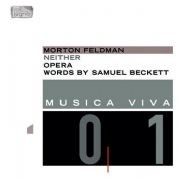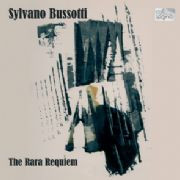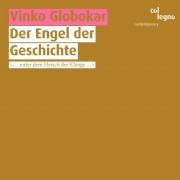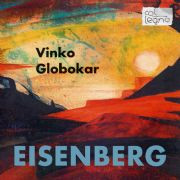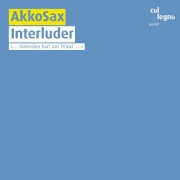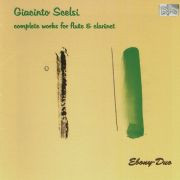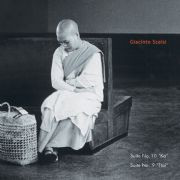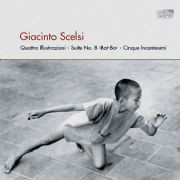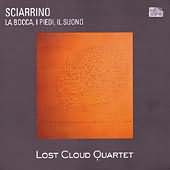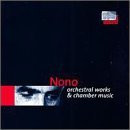★Col Legno
Neither
An opera? An anti-opera? A monodrama? Whatever it may be: Neither (1977) marks the meeting of the kindred artistic souls of Samuel Beckett and Morton Feldman.
The Rara Requiem
Added to these are bits and pieces of first names of real people and opera characters, and numerous quotes from older works by Sylvano Bussotti – who combines it all to a work that is also a grand opera: The Rara Requiem was written as the third part (acts 4 and 5) of Lorenzaccio (1968-72), the story of a renaissance man. A pandemonium of sounds, the subtotal of Bussotti's previous oeuvre – and the celebration of a proud renaissance man who confronts death with the courage of contempt. "The musi…
Donaueschinger Musiktage 2000
The annual collegno offering from the Donaueschingen Music Festival, for the millennium year2000, runs to 4 CDs and just under 5 hours of new music, for combinationsranging from a straightforward string trio, to 4 soloists, 4 ensembles, andlive electronics! All the works areperformed 'live', and all are world première performances, so that this set,with its illuminating notes by each of the 11 composers, constitutes aninvaluable historical document.
Der Engel der Geschichte
Vinko Globokar advises listeners to "make up their own movies to the music." The Slovenian-French European does not believe in explaining music. And the deeply moving expressiveness of his orchestral trilogy Der Engel der Geschichte, "The angel of history," inspired by Paul Klee's painting "Angelus Novus" and now documented by this recording of the exemplary SWR production, certainly speaks for itself. The listener encounters three disturbing sound images: the first, "Zerfall," refers to the dis…
Eisenberg
Archaic sounds, songs as psychodramas, plowing through the depths and shallows of the orchestra: experience Globokar's cosmos of original, intense music.
Interluder
On their album Interluder, AkkoSax are busy fathoming the depths of musical history: MedievalRenaissance meets FolkJazz.
Complete Works for Flûte and Clarinet
The Complete Works for Flute and Clarinet: In both original works and transcriptions, the Ebony Duo explores Scelsi’s use of special sound colors and his coloring of sound. Transcriptions especially prepared by the clarinetist (and pianist) Michael Raster provide the basis for some of the works on the present album. Yet Scelsi’s original intentions incurred no damage as a result of this recrafting. To the contrary! “The formidable technical demands that playing on two strings with in part opposi…
Suite N° 10 \"Ka\" / Suite N° 9 \"Ttai\"
Scelsi's works usually originated as transcribed improvisations; therefore they are never based on superficialities of form or compositional technique but always directly reveal the core of their message. Pianist Marianne Schroeder reports that Scelsi recommended daily improvisational practice as a method for discovering one's own creativity; and on his Suite No. 9 "Ttai" the composer is said to have commented: "Play it whenever you're sad. And when you're in high spirits." In Ttai, which links …
Quattro illustrazioni / Suite N° 8 \"Bot-Ba\" / Cinque incantesi
Crazy about the sound: the composer as a medium fHis bizarre way of composing earned Giacinto Scelsi not only fame and respect; he was also mockingly accused of dilettantism. Scelsi regarded himself not as a composer in the traditional sense, i.e. one to combine form, rhythm, pitch and sound in an intelligent way and note the result down on paper, but as a tool. His music was created during periods of meditative contemplation recorded by him on tape, to be noted down only afterwards. Eastern rel…
La Bocca, I Piedi, Il Suono
Col legno and Sciarrino have gone all out for this “world premiere recording.” The four soloists have been expertly mixed with other promenading saxophonists recorded on separate occasions, but most importantly, the package includes standard CD audio on one disc and three DVD audio formats (PCM linear 24-bit / 96 kHz, PCM linear 24-bit / 192 kHz, and AC3) on another.
Orchestral Works & Chamber Music
He was truly one of the greatest. A collage portrait of Luigi Nono, from Due espressioni, premiered at Donaueschingen in 1953, to Post-Prae-Ludium (1987).
Orchestral Works
Mauricio Kagel by himself: the composer, theater maker, filmmaker, virtuoso, writer of radio plays and, on the whole, all-round talent conducts his own works.
